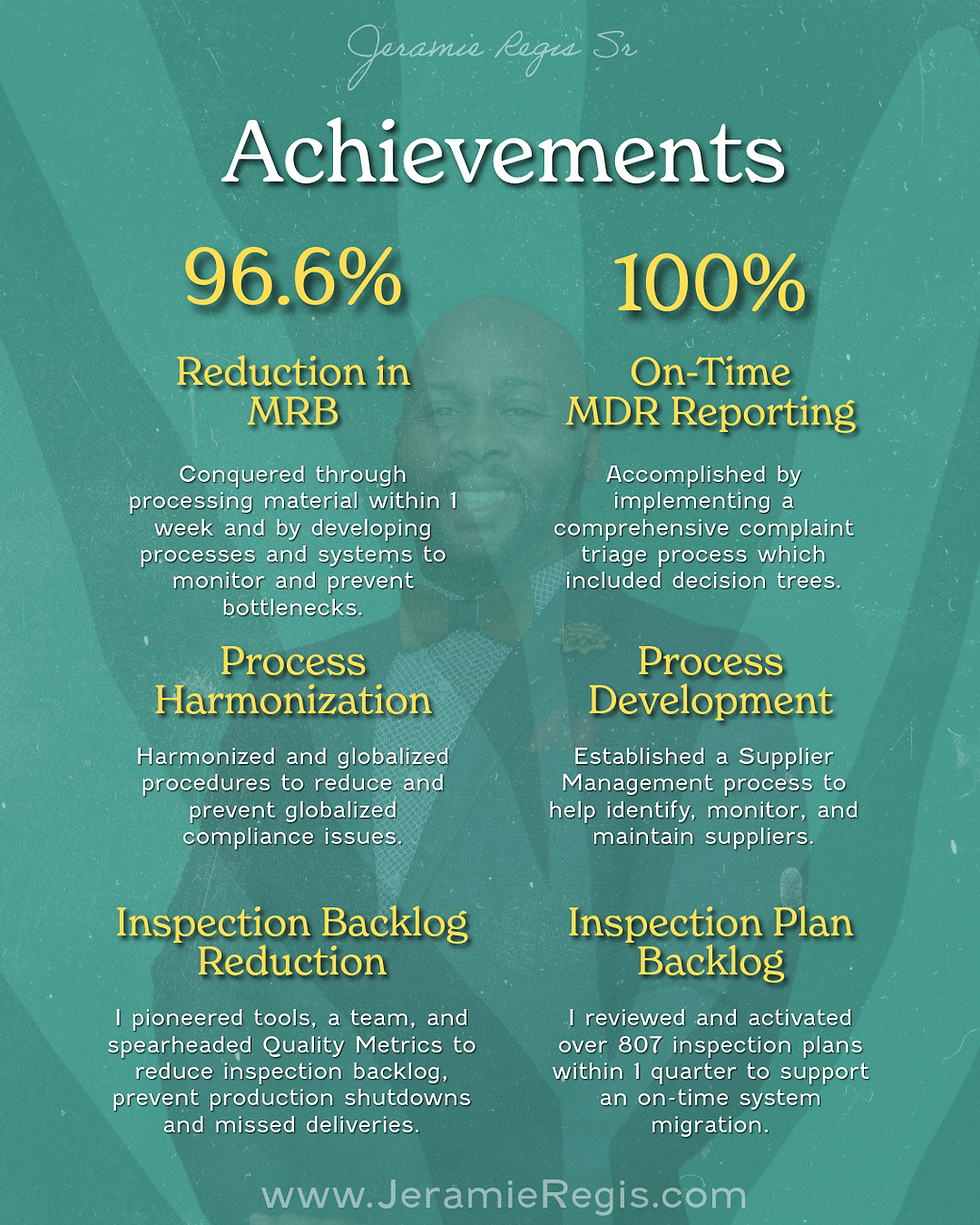Complaints, I've had a few
- jeramieregis
- Feb 7, 2021
- 2 min read
Updated: Sep 6

My colleague Zuned Khalifa recently wrote an article (https://www.linkedin.com/pulse/whats-your-quality-system-do-you-zuned-khalifa/?trackingId=2hhX4WcCT6O215PLgC24qQ%3D%3D) about the different views of what a quality system does for a company. One of his examples discusses how customer feedback can drive improvements. I wanted to elaborate lightly on this point as I believe the post market surveillance process to be crucial to an organization’s success. Specifically, educating your team on the fundamentals of complaints and complaint-handling is something that can benefit all companies.
One of the challenges I find many medical device companies facing is the lack of understanding of what a complaint is. The FDA broadly defines a complaint as “any written, electronic, or oral communication that alleges deficiencies related to the identity, quality, durability, reliability, safety, effectiveness, or performance of a device after it is released for distribution”. In practice, one of the typical workflows I have found is that a company will specify initial contact from a customer (e.g. a call for technical support, an email with questions, etc.) as an “inquiry”, or a “ticket”. These items are subsequently reviewed by a post market team to identify if it meets the criteria to be considered a complaint and to move forward for further processing. This is a critical juncture as I have found companies that have a high-volume of customer contact will try to actively mitigate the number of complaint files it has to process.
It is important to note that the customer’s intent when reaching out to the company may not be to “complain”. This may require personnel to apply critical thinking to the information provided (from transcripts of the call or whatever notes are available from the incident) or to call a patient, nurse or physician and try to obtain more details. I have seen too many post market personnel call a healthcare professional or patient and to follow-up and ask about their “recent complaint” only for these individuals to deny having made one and for the personnel feel comfortable to close a file as a “non-complaint”. However, the decision of whether or not you have received is a complaint should not be based on the intent of the customer’s outreach.
As an example at a previous company, a hospital called us to question and follow-up on results provided by our company’s device. During the conversation, an engineering representative followed up to resolve the issue with the hospital and identified incorrect results had been provided. I mentioned filing this as a complaint for our records. The representative was confused – the hospital got what it needed. I explained that, in the broader context, the hospital had questioned the performance of the device. In many instances, it may be safer to assume customer contact will lead to a complaint than not.
Once this is considered, complaints can be a treasure trove of potential improvements. While most companies will focus on risk-based approaches to tackle more significant areas, even complaints that are not considered major (such as those not resulting in a serious injury or from a malfunction) can lead to identification of changes that increase customer satisfaction.
Article source link below
https://www.linkedin.com/pulse/complaints-ive-had-few-jeramie-regis/




Comments